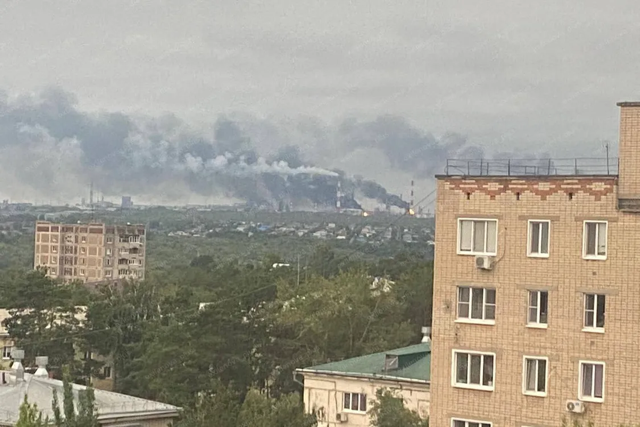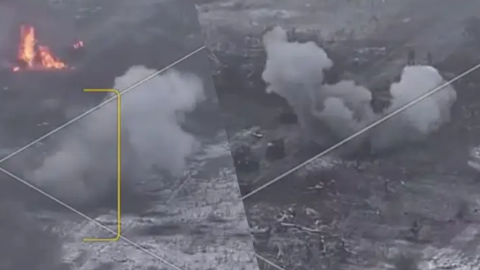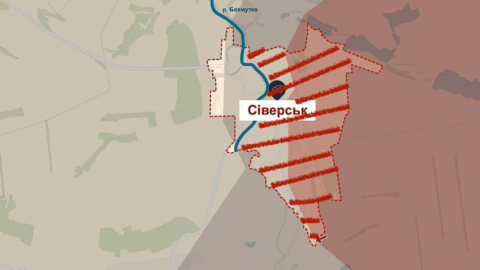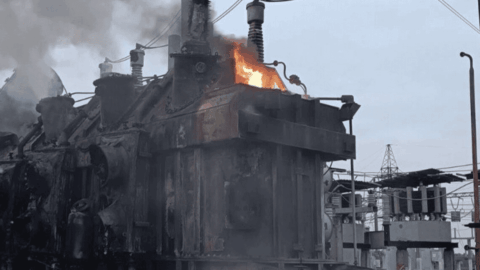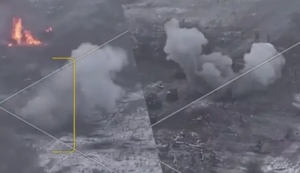The General Staff has confirmed the strike on the Syzran Oil Refinery in Russia’s Samara region.
The first reports of a drone attack on Syzran began appearing after 4 a.m. on August 15 – initially in local chats, and shortly after, in nationwide Russian communities.
At first, the latter cheerfully reported “active air defense operations” and claimed that “several targets had already been destroyed.”
However, it soon became clear that what was being “destroyed” were not anti-aircraft missiles targeting drones heading to Syzran, but the Syzran Oil Refinery itself. According to Russian propaganda, the “destructive fragments” were responsible for turning the facility into a torch.
Meanwhile, Russians actively filmed the “falling debris” onto the refinery: the fragments reportedly flew with remarkable precision, hitting their targets multiple times.
The trend was somewhat encouraging: by around 6 a.m., the fire at the refinery had only intensified.
This refinery is one of the largest in the Rosneft system. Its designed capacity is about 8–8.5 million tons of oil per year (roughly 160–170 thousand barrels per day).
In recent years, actual throughput, according to Petro Andriushchenko, head of the Center for the Study of Occupation, reached 6–7 million tons, depending on logistics and maintenance.
The facility is of great importance to the aggressor state. It supplies fuel to the Samara, Saratov, and Penza regions, as well as parts of Central Russia. Moreover, the Syzran Oil Refinery has access to rail and river routes, allowing distribution both within Russia and for export via the Volga and Caspian ports.
It produces a wide range of fuels: gasoline, diesel, aviation fuel, fuel oil, and bitumen, making it critically important for the regional agricultural and transport sectors.
It also supports the Russian armed forces, supplying fuel to airfields and military units in Russia’s Central and Southern districts, effectively fueling the war against Ukraine.
“And if it is stopped or severely damaged, the region will face a fuel shortage, requiring shipments from other refineries, which would increase logistical costs and put additional strain on transport corridors. This is the third attack on this refinery. Previous strikes occurred in 2024 and February 2025. The GDU6 central unit was damaged,” Andriushchenko summarized.
According to the General Staff, the target was hit, with fire and explosions recorded, while the full extent of the damage is still being assessed.
Meanwhile, Russian firefighters apparently did not rush to the “falling debris” site: locals in Syzran observed a long line of fire trucks stuck in a traffic jam created by themselves.
Local reports indicate that at least ten drones struck Syzran. Russians also complained that the hits were “severe” and that there were casualties as a result.
According to Samara Governor Vyacheslav Fedorishchev, a total of 13 drones were involved, all of which were “destroyed,” naturally. The official also urged Russians not to document the “effective work” of Russian air defenses, especially its outcomes.
Residents of Syzran are also discussing that publishing photos and videos of the fire could attract “guests” from the FSB and are considering how many walls to hide behind to remain unseen by “drones with thermal cameras.”
On the same night, the command post of the 132nd Separate Motorized Rifle Brigade of the 51st Russian Army in Yenakiieve, on temporarily occupied territory in Donetsk region, was also struck.
It is worth noting that in 14 days, Ukrainian drones have hit six Russian oil refineries:
02.08 – Ryazan (13.1 million t/year)
02.08 – Novokuibyshevsk (8.3 million t/year)
07.08 – Afipsky (7.02 million t/year)
10.08 – Saratov (7.0 million t/year)
14.08 – Volgograd (14.8 million t/year)
15.08 – Syzran (8.5 million t/year)
Tags: 2025 war news Drone Strike refinery fire russia - ukraine war Russia energy infrastructure Russian fuel supply hit Samara region Syzran refinery ukraine war
